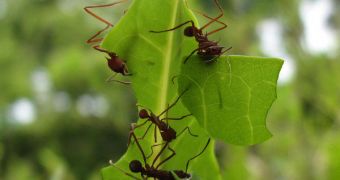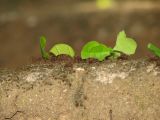Leaf-cutter ants are arguably among the most amazing living things in the entire world. They are mostly renowned for their ability to grow fungus “gardens” and also for the fact that they can carry chunks of leaves that are several times their body size and weight. Now, scientists have found yet another remarkable ability in these creatures, namely the fact that they can actually tend to their gardens with the same care and dedication as their human counterparts. The key to being able to do so is to use nitrogen-fixing bacteria inside the soil, which they have apparently evolved to be capable of.
The new discovery may explain how leaf-cutter ants came to dominate the American tropics and subtropics, among so many other ant species. This never-before-seen symbiosis of ants and bacteria is highly interesting to study, as it hints at a weird and unique cooperation that benefited both species sometime in the distant past, and therefore endured over the ages. Details of the amazing discovery appear in this week's issue of the top journal Science.
“These ants are both intrinsically fascinating, and significant processors of organic matter in forests. The nitrogen fixed by these bacteria should be incorporated into the overall nitrogen budget calculations for the forests in which leaf-cutter ants thrive,” Matt Kane, the US National Science Foundation (NSF) Division of Environmental Biology program director, says. The Division was the agency that provided most of the fundings for the new investigation.
Paper coauthor and University of Wisconsin-Madison (UWM) scientist Garret Suen reveals that one of the main triggers that pushed the two species together might be the relative lack of nitrogen in the upper layers of the soil. “If you don't have it, you can't survive,” the expert says. Apparently, the symbiosis is perfect for both species. The bacteria thrive, and the ants are able to construct nests the size of small houses underground. The populations in these nests often exceed millions of individuals.
The true mutualism of the relationship was demonstrated in the new study. “This is important because it could be that the bacteria are fixing nitrogen for themselves and not actually benefiting the ants. Showing that the nitrogen fixed by the bacteria is incorporated into the ants establishes that these bacteria aren't just transient visitors,” Suen adds.

 14 DAY TRIAL //
14 DAY TRIAL // 
